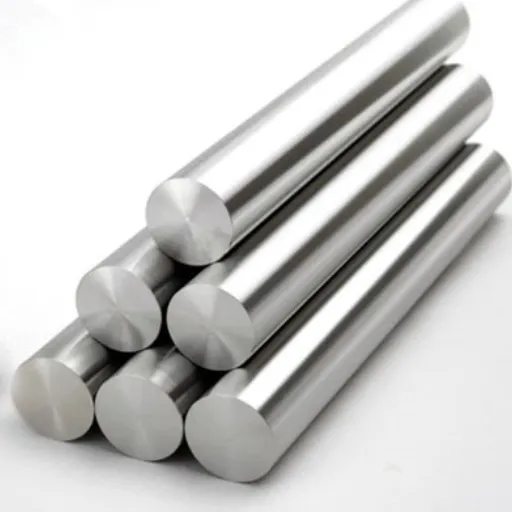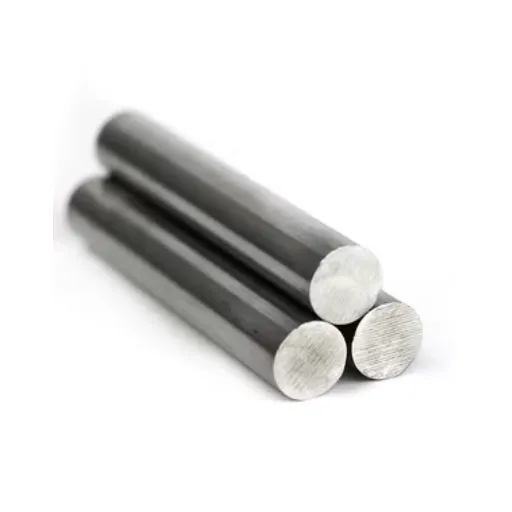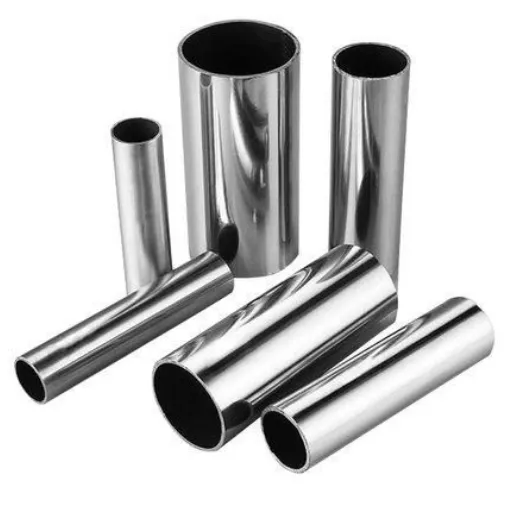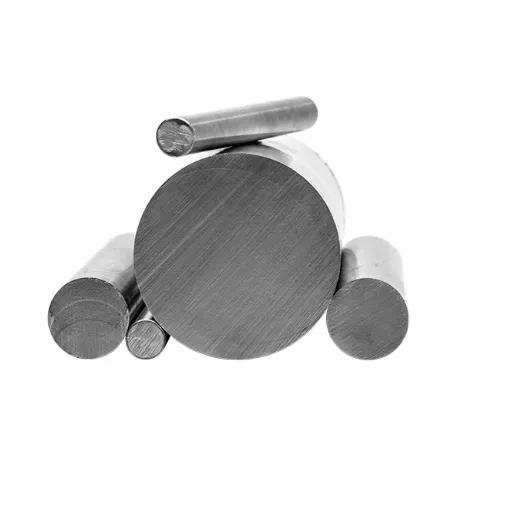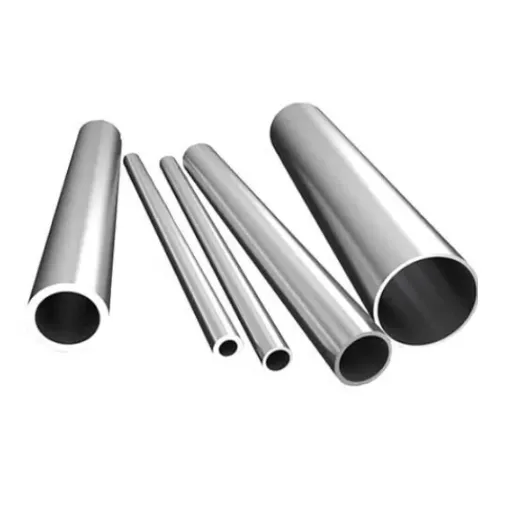Among the materials possessing extraordinary strength, resistance to corrosive environments, and versatility, Monel 400 is undoubtedly the first one to come to mind. It has been used in various industries such as marine, chemical, and aerospace, and has established the reputation of being the best choice in harsh environments. However, what is it really that makes Monel 400 so exceptional? This write-up is to take a closer look at the main properties of Monel 400, its practical applications in multiple industries, and the reasons why it is still a widely favored material by both manufacturers and engineers. So, let’s find out together the fascinating features and potentials that make Monel 400 a key material in modern times.
Introduction to Monel Alloy
What is Monel Alloy?
Monel alloy is a collective name for nickel-based alloys having nickel as a major component and copper as a principal one, with trace amounts of iron, manganese, carbon, and silicon. The high nickel proportion, usually approximately 63%, is the reason for its exceptional corrosion resistance and therefore, it is an excellent candidate for usage in rough places. Monel alloys are characterized by their high strength and very good time before cause of failure even in the case of extreme conditions.
One of the most common variants is Monel 400 which is a multipurpose alloy with great mechanical properties and resistance against both acidic and alkaline environments. It is mainly used in marine and chemical applications where such conditions as the presence of seawater and corrosive chemicals are very widely spread. Monel 400 is not like many other materials, it keeps its strength and integrity even when very hot and under high pressure.
Monel alloy applications are found in a number of different industry sectors, such as marine engineering, chemical processing, aerospace, and oil and gas. Its outstanding combination of properties that is corrosion resistance plus strength, makes it very useful for the manufacturing of components such as pumps, valves, and heat exchangers. The Monel alloy has been, over the years, a solution that is both reliable and efficient for making critical industrial applications possible.
History and Development of Monel
Monel alloy was first created in the early 1900s by the International Nickel Company (INCO). The alloy was named after one of the executives at the company, Ambrose Monell, although due to trademark restrictions at the time, a letter “L” was cut from his name. The new metal was first a solution to the problem of industrial applications that required extremely strong and corrosion-resistant metals.
Nickel-copper ore, that was naturally mixed, was refined and then processed to create Monel and its production started in 1905. The nickel used for the alloy was around 65%, the copper about 30%, and the rest was made up of iron, manganese, carbon, and silicon in very small amounts. Resistance against the environmental degradation was the main reason for the alloy’s composition. Monel became a landmark material of its time, and its long life in applications necessitating exposure to harsh conditions was the reason.
In the following years, Monel alloy evolved as metallurgy progressed and specific variations of the alloy were tailored for different industry needs. Resistance to corrosion was the common feature among the different iterations, and especially in the case of marine environments and exposure to chemicals, the resistance was very strong. Monel is still very much a part of the industrial applications of today; its timelessness and brilliance of the original creation idea are still manifested in its present form.
Importance in Industrial Applications
Monel alloy is the material that can be vividly seen in many industries owing to the remarkable properties like avery high resistance to corrosion and natural elements, exceedingly high strength, and durability. The ability of Monel to endure heat, and acids, and do other harsh applications makes it an ideal material for all such places. So, the aforementioned: marine engineering, chemical processing, and aerospace industries, are the main beneficiaries of Monel’s unique capabilities.
The marine industry, for instance, is making use of Monel in the components like propeller shafts, pump shafts, and seawater valves as it is the only material that can resist the constant corrosion of saltwater. Its build is strong enough to stand the test of time and even death under the ocean’s corrosive elements and not promise, hence assuring reliability. On the same note, the chemical processing industry is using Monel’s ability to withstand acids and caustics as a reason to choose it for storing tanks, pipelines, and heat exchangers that deal with the most aggressive chemicals.
Moreover, Monel is of paramount importance in the aerospace industry in turbine blades and other components manufacturing that are constantly subjected to severest of heat and pressure. The very quality of Monel to preserve its structure under such conditions is the one that guarantees the safety and efficiency of the aerospace industry. The flexibility and dependability of Monel are the very traits that it is given the prominence in industrial applications, making it the material of choice where high-performance solutions are required.
Properties of Monel Alloys
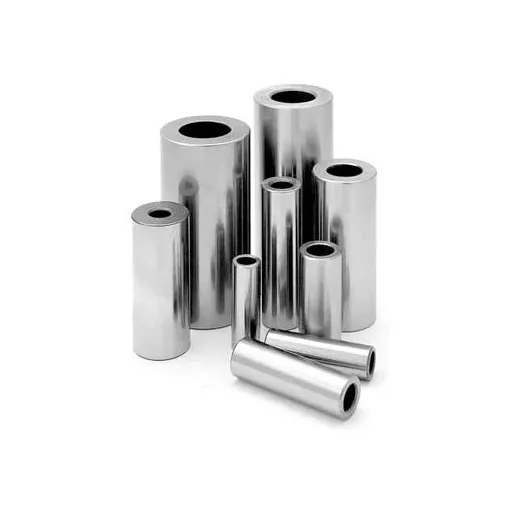
Physical Properties of Monel
Monel alloys have been known for their physical properties, which are so good that they make the materials that are really needed in the industries with such materials. One of the physical properties of Monel that everyone knows about is its incredible resistance to corrosion, which is not only in but mostly near seawater, acids and alkalis. The corrosion resistance is owing to the metal’s basic making up of nickel and copper, the metals that cannot be oxidized. Besides, Monel alloys have good mechanical properties, high tensile strength and toughness, which can be good up to minus temperatures, thus, the extremes of both cold and hot can be used for the application areas.
Key Physical Properties:
- Density: Typical density of 8.8 to 8.9 g/cm³
- Thermal Conductivity: Low compared to pure copper
- Thermal Expansion: Moderate coefficients for dimensional stability
- Magnetic Properties: Some grades slightly magnetic at room temperature
Another property that is very noticeable about Monel alloys is density, with the typical density of 8.8 to 8.9 g/cm3. The density of the alloy is quite high and it is one of the reasons for the alloy’s excellent properties and durability that it can still perform in situations where there is great stress on it. Low thermal conductivity is another Monel alloy property when compared to pure copper. This can be an advantage in cases where the main concern is either insulation or stability in the thermal condition. The alloys have moderate thermal expansion coefficients which help to achieve dimensional stability in temperature variation, the aerospace and industrial applications where precision is the key.
One more reason why Monel alloys are magnets in their own right is magnetic properties. Some grades of Monel, like Monel 400, are slightly magnetic at room temperature, while others may show no magnetic property at all, depending on composition and treatment. By combining these physical attributes, Monel alloys are not only in demand to be used in the marine and chemical industries but even in the automotive and aerospace sectors, where their reliability is valued to be high. In this way, Monel will always be a popular and durable option in many demanding applications due to its features.
Mechanical Properties of Monel
Monel alloys are highly praised for their outstanding mechanical characteristics to an extent that they are extensively used in the industrial applications. One of the major properties of Monel is its extremely strong and durable nature which makes it to be quite a lot of stress still no deformation occurs. The amount of Monel’s tensile strength is usually between 70,000 and 130,000 psi depending on the alloy and its treatment. The strength of Monel is accompanied with its excellent flexibility and toughness, thus, the material can suffer impact and thermal expansion without cracking or failing. These properties make Monel a good choice for very harsh conditions where keeping the building strong is very important.
| Mechanical Property | Value/Description |
|---|---|
| Tensile Strength | 70,000 – 130,000 psi |
| Fatigue Resistance | High resistance to varying loads and vibrations |
| Creep Resistance | Excellent stability at high temperatures |
| Machinability & Weldability | Superior – easy to cut, form, and weld |
Monel’s high resistance to fatigue is another major mechanical property that contributes to the company’s longevity in applications exposed to varying loads and vibrations. Such environments are exactly what Monel is made up of for parts like springs, fasteners, and pump shafts that are subject to continuous stress. Furthermore, Monel displays good resistance to creep, thus it can continuously remain in a stable state despite being subjected to high temperatures for a long time. Such a feature increases its dependability in heat exchangers, boiler systems, and aerospace components, where both heat and mechanical stress are present.
Monel, besides its superior machinability and weldability, has its performance to the next level. It is easier to cut, pound, and join with the standard techniques even if it is tougher than the regular steels. The whole process of making complex parts and designs becomes easy with this flexibility. Monel, along with its natural resistance to corrosion and oxidation, presents a full range of mechanical properties suitable to various demanding environments. Monel alloys continue to be the reliable choice of materials across industries, as they not only exhibit excellent mechanical properties but also last long.
Corrosion Resistance of Monel Alloy 400
Monel Alloy 400 is seen as a top material that resists corrosion practically anywhere corrosion resistance is required. This nickel-copper alloy beautifully stands up against the rapidly moving seawater and brackish waters to be the preferred material for marine applications. It is very stressed-corrosion cracking resistant in freshwater environments while simultaneously being able to handle the highly acidic and alkaline conditions quite effectively.
The special matching of nickel and copper elements in Monel 400 leads to its surprising invulnerability to hydrofluoric acid, which is one of the most potent acids. Also, the acidulous conditions of sulfuric acid of modest concentrations and temperatures do not faze him, nor does the case of fluorine-rich environments. The combination of these properties makes him it a necessity in the chemical processing, power generation, and marine engineering industries.
According to test results, Monel 400 is still structurally sound even after the long exposure to chlorides and oxidizing agents, which gives it an advantage over many other metals in the most demanding applications. Its property of resisting pitting, crevice corrosion, and intergranular attack reliably ensures its use in the manufacturing of pump shafts, heat exchangers, and storage tanks. It should be noted that along with the high resistance Monel Alloy 400 also retains mechanical strength, thus, expanding the range of applications even more.
The industries utilizing Monel Alloy 400’s corrosion-resistant properties will have the benefits of the material’s extended service life and lower maintenance expectations, and thus, its role as a cost-effective yet high-performing material choice will be further endorsed.
Applications of Monel Alloy
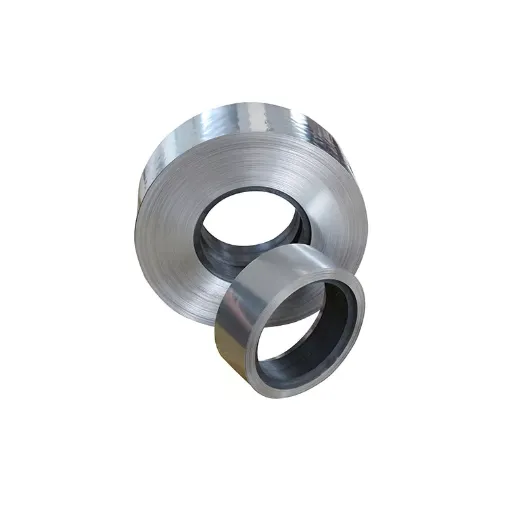
Aerospace Applications of Monel
Monel Alloy has become a mainstay in aerospace engineering due to its remarkable strength, durability, and corrosion resistance properties. Its capability to endure extreme temperatures and difficult environments is of utmost importance in a variety of aerospace applications. Here are five major aerospace applications of Monel Alloy:
- 1
Turbine Blades:
Monel Alloy is widely used in turbine blades for its ability to hold mechanical properties at high temperatures, thereby allowing to efficient performance even under very severe operating conditions. - 2
Exhaust Systems:
The excellent resistance to corrosion and heat that Monel offers makes it the most suitable material for stuffing aircraft exhaust systems which are constantly exposed to very corrosive and high-temperature environments. - 3
Fuel and Hydraulic Lines:
Monel Alloy is applied in fuel and hydraulic lines for its impressive water and hydrofluoric acid resistance, thus ensuring the service life and the safety of the critical applications. - 4
Rocket Engine Components:
Monel is used for making critical parts of rocket engines, such as valves and ducts, because of its unique strength and the ability to withstand the aggressive chemical interactions during rocket firing. - 5
Landing Gear Components:
Monel’s strengths together with its resistance to stress corrosion cracking mean that its use in landing gear components translates to very dependable performance, hence safety and durability under uncomfortable conditions.
Monel Alloy’s properties have enabled it to play an important part in aerospace technology by providing reliable performance and a longer service life.
Chemical Processing Uses
Monel alloys are the first choice for the chemical manufacturing sector due to the remarkable property of resistance that they exhibit even in the most corrosive of surroundings, which include both acidic and alkaline solutions. Besides that, the metals have great thermal and chemical resistances hence they are very important in keeping the production process intact and reducing the need for maintenance. The following are the five major ways on how Monel is used in the chemical industry:
- 1
Heat Exchangers:
Due to Monel’s ability to resist corrosion, the exchangers made from this material are able to last even when harsh chemicals such as hydrochloric and sulfuric acid are involved, thus allowing good heat transfer even at the worst conditions. - 2
Pumps and Valves:
Monel alloys are one of the most common materials for making pumps and valves that handle corrosive fluids, they are very reliable and this results in fewer risks of leakage or failure during critical operations plus the other benefits of maintenance and parts replacement that come with it. - 3
Storage Tanks and Vessels:
Even for the most reactive and caustic chemicals like chlorine and hydrofluoric acid, storage tanks made from Monel tell no lies in providing the best protection against degradation and leaking that results from material failure. - 4
Chemical Piping Systems:
Very few piping systems can compare to Monel when it comes to the transport of aggressive chemicals as it provides the best structural integrity and operational efficiency over long periods even under the harshest conditions. - 5
Distillation Columns:
Distillation columns utilizing Monel’s features have no difficulty separating chemical mixtures and even this is true for the applications that involve the use of acid or high-temperature processes.
These applications are a strong indication of the importance of Monel in the areas of safety, efficiency, and reliability in the chemical processing operations of today.
Other Industrial Applications
Aerospace engineering is one of the fields where Monel is used greatly because of its remarkable corrosion resistance and high-temperature strength. It is used in such applications as fuel tanks, exhaust systems, and engine components, which are the areas of most thermal and environmental stresses. According to one study, Monel alloys can handle temperatures as high as 1000°F (538°C) without losing their structural integrity.
Monel, owing to its high resistance to seawater corrosion, is a material of choice for a number of marine applications. It is employed in making propeller shafts, seawater valve components, and fishing net buoy systems. The corrosion rate of Monel 400, in particular, is as low as 0.02 mm/year in seawater, thereby making it crucial for the maritime industry.
Monel is an essential material in the oil and gas industry due to its ability to endure and resist sour gases. Offshore drilling normally uses Monel in parts like the piping system, pumps, and valves. Studies show that Monel K-500 responds better to tensile strength and crack propagation than many stainless steels in challenging environments.
Great electrical conductivity and corrosion resistance are the traits that make Monel trustworthy for application in specialized electronic equipment. Highly qualified areas include circuit breakers, connectors, and terminals where moisture might otherwise corrode conventional materials. It provides even more conductivity than Type 304 stainless steel, thereby increasing durability and performance.
Monel alloys have been universally adopted in cryogenic systems because of their incredible toughness at very low temperatures. They find applications in LNG storage tanks, transfer piping, and aerospace cryogenic applications. Even at -320°F (-196°C) Monel 400 is not brittle, which is very important because safety and efficiency have to be maintained in cryogenic environments.
All of the above applications highlight the very nature of Monel that is its versatility and indispensable contributions to various industrial sectors. Noteworthy amongst the unique features of Monel, its very properties continue to attract technological advancements and efficiency improvements in very strict conditions.
Advantages of Using Monel
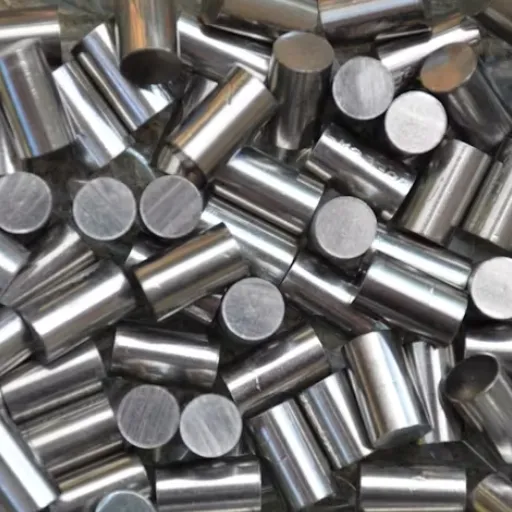
Benefits of Monel 400 Alloy
Alloy Monel 400 comes with tons of benefits that create it a material of choice for industrial applications that are really and truly demanding. The 5 key advantages:
✓ Exceptional Corrosion Resistance
Corrosion rates for Monel 400 have been reported as low as 0.002 inches per year in lab tests therefore this material can be assured to last a long time in such conditions. It is excellent insulation for corrosive environments like seawater, hydrofluoric acid, and alkalis.
✓ High Strength and Toughness
Monel 400, with a heat strength of 70,000-85,000 psi (483-586 MPa), offers mechanical properties which are high tensile and thus hard to break up. It can withstand both extreme temperatures and corrosion thus it is widely used in different applications like pressure vessels, shafts, and pumps.
✓ Excellent Thermal Conductivity
Thermal conductivity of the alloy is about 21 W/m·K which allows effective heat transfer in heat exchangers and other thermal systems. This issue is very important for the complete energy usage and system efficiency’s keeping.
✓ Resistance to Cryogenic Temperatures
Monel 400 maintains its ductility and toughness characteristics even when exposed to cryogenic temperatures that reach as low as -320°F (-196°C). This provides a very good fit of the metal in the applications like liquefied gas production, cryogenic storage, and aircraft that operate in extreme cold.
✓ Ease of Fabrication and Weldability
Machining, welding, and fabrication of Monel 400 are all possible without compromising the alloy’s structural integrity. The alloy accommodates different welding techniques like gas tungsten arc welding (GTAW) and metal inert gas welding (MIG) thus making the application and assembly of the material easier in complex setups.
All of the above-mentioned advantages together with each other contribute to the operational efficiency and reliability of the Monel 400 alloy, therefore, it is progressively recognized as a high-performance material in various industries.
Comparative Advantages vs Monel Alternatives
Monel 400 has many excellent performance characteristics, particularly for extreme conditions, when compared with other alloys like Monel K-500, Hastelloy, and stainless steel. One significant advantage over stainless steel is the superior resistance of Monel 400 to chloride stress corrosion cracking. This property makes it the first choice material for marine applications. When viewedcomparatively, Monel K-500 takes the lead in mechanical strength owing to its age-hardening trait, whereas Monel 400 gives a superlative ductility and toughness thereby making it a more versatile alloy especially in dynamic environments where its flexibility is critical.
| Comparison Factor | Monel 400 | Alternatives |
|---|---|---|
| Chloride Stress Corrosion | Superior resistance | Stainless steel: Lower resistance |
| Ductility & Toughness | Superlative performance | Monel K-500: Higher strength but less ductile |
| Acid Resistance | Extraordinary in specific concentrations | Hastelloy: May need extra precautions |
| Cost-Effectiveness | More economical | Hastelloy: Higher cost |
| Fabrication Ease | Easy welding & fabrication | Varies by material |
Moreover, Monel 400 has an extraordinary resistance in both acidic and alkaline environments. This resistance particularly surpasses that of Hastelloy when it comes to specific concentrations of sulfuric and hydrochloric acid, where Hastelloy may all the more need to take precautions. In addition, the alloy’s thermal stability is another factor that gives it preference in the high-temperature environments, since it preserves mechanical integrity where others might already be disqualified due to softening as a consequence of continuous exposure.
Considering cost, Monel 400 is largely the cheaper option when compared with new alloys like Hastelloy, but still offering strong corrosion resistance and long operative life. Moreover, the characteristic of Monel 400 that makes the fabrication and welding easier contributes to the decrease in production time and overall manufacturing cost, a situation that frequently supports its use in industrial process pipelines, heat exchangers, and pump systems. All these properties put together enhance the reputation of Monel 400 as a versatile and cost-effective material for a wide range of metallurgical applications.
Long-term Performance and Reliability
Monel 400 alloy is well-known for its superb long-term performance and trustworthy nature in harsh environments. Its properties are advantages for the applications in which the performance must be dependable for the long time. The following are the main elements that help the alloy to be long-lasting and reliable:
Corrosion Resistance
Monel 400 offers great resistance to many corrosive agents, for instance, it is not affected by seawater, hydrofluoric acid, and alkalis. Its resistance in oxidizing and reducing conditions means the alloy material can last for a long time, especially in the marine and chemical processing industries.
Retention of Mechanical Strength
Even at extremely high and low temperatures ranging from -450°F (-268°C) to 1,000°F (538°C), the alloy retains its high tensile strength and toughness. This property provides applications with structural integrity where thermal variations are dominant.
Minimum Maintenance Requirements
Pitting, stress corrosion cracking, and erosion are no match for Monel 400 so it does not require frequent maintenance. Thus, the alloy has less downtime and lower operating costs, offering long-term economic benefits.
Durability in High-Pressure Environments
Monel 400 is the best material suitable for high-pressure conditions like those in oil and gas pipelines or aerospace systems. Its characteristic of not getting deformed under great pressure leads to the continued usage of the alloy in critical applications.
Dynamic Conditions Thermal Stability
The material’s thermal stability under dynamic and cyclical thermal stress prevents it from early failure or degradation. This makes it a perfect choice for heat exchangers and other equipment that are subjected to rapid temperature changes.
These properties make Monel 400 a key material for those industries where reliability and durability are essentials, thus allowing the use of the material in a safe and efficient way in prolonged operational timelines.
Emerging Trends and Innovations in Monel Alloys
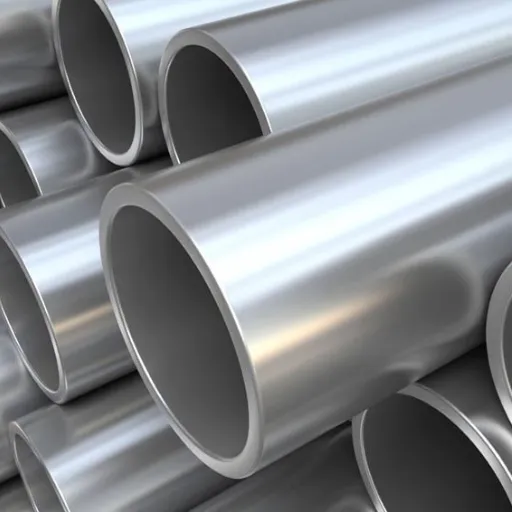
Recent Developments in Monel Alloy Technology
Technology associated with Monel alloys recently has made great strides, stressing to enhance and broaden the use of these materials in different industries. The innovations are aimed at the microstructure of the alloy, which is carried out through high-tech metallurgical methods like precision alloying and additive manufacturing. These methods not only allow for better control of the elemental composition but also result in the development of materials with superior mechanical properties, higher resistance to corrosion, and better suitability for intricate geometries.
Innovation Highlights:
Precision Alloying
Advanced metallurgical methods for better control of elemental composition
Additive Manufacturing
3D printing capabilities for complex geometries and customized parts
Surface Coating Technology
Thermal-sprayed barriers and ion-based treatments for enhanced protection
Moreover, new surface coating technology has provided Monel alloys with a boost in highly corrosive environments. State-of-the-art coatings, such as thermal-sprayed protective barriers and ion-based treatments, enhance the material’s lifespan considerably, thus leading to lower maintenance costs. This sector specifically offshore drilling and marine engineering, where harsh conditions prevail and equipment breakdown can cost significant time and money, are especially interested in these developments.
There has been notable progress in the blending of Monel alloys with other materials to make them suitable for special applications. It has been shown that the combination of Monel with ceramics or advanced polymers can result in parts that possess both high strength and thermal stability. Besides, efforts are being made to find the so-called sustainable production methods for Monel alloys that would go on reduce energy consumption during processing without the loss of material’s excellent qualities.
These technological leaps underscore the continued relevance and indispensability of Monel alloys in meeting modern engineering challenges, further solidifying their position as a critical material in the pursuit of industrial innovation.
Future Applications and Market Outlook
Monel alloys now are regarded as future materials for the industries which will be the most significant and constantly growing. Monel alloys have become the ultimate material for the aerospace sector by using them in Aircraft, Turbines, and space exploration equipment due to their lightweight property, resistance to corrosion, and high tolerance to heat. Also, the renewable energy sector opens another door where the longevity of offshore wind turbines and geothermal energy systems, which are already saline or high-pressure environment, can be prolonged by Monel’s durability.
Projected Growth Sectors
- 🚀 Advanced Manufacturing
Expanding infrastructure in developing economies - 🔬 Chemical Processing Plants
Increased demand for corrosion-resistant materials - ⚡ Energy Production Infrastructure
Renewable energy systems and hydrogen storage - 🔋 Advanced Battery Systems
Emerging technologies for energy storage
On the other hand, Monel alloys are expected to see a continuous rise in demand as market trends speak of the industrial infrastructure expansion in the developing economies. Areas that focus heavily on advanced manufacturing, chemical processing plants, and energy production infrastructure are likely to be the major contributors to this growth. Also, the increasing use of Monel in emerging technologies such as hydrogen storage tanks or advanced battery systems speaks volumes about its importance in coping with the contemporary challenges.
In my opinion, I consider the critical position of Monel alloys for the industries in the future whether they are material solutions in the evolving sectors or technological innovations driver. To answer your query shortly, I would say that the sifting of the alloy to the continuous research of sustainable production is a market necessity indicating that Monel alloys will be with us for many years as one of the high-performance materials.
Innovations in Alloy Composition
The major progress in alloy engineering during the recent years has mainly been directed to enhancing the materials’ properties for high-performance and sustainable applications. One of the paramount trends in this direction is the use of nano-scale additives, as well as precise compositional adjustments, for the improvement of corrosion, thermal stability, and mechanical strength. To illustrate, the addition of rare elements, like yttrium or niobium, to the alloy matrix has opened up industries demanding material durability under harsh operating conditions to apply the new principle of wear resistance hands-on.
Moreover, the present-day computational tools, like the machine learning-driven predictive modeling, have started to redefine the way alloys are being designed. The use of such sophisticated algorithms lets the researchers perform the simulation of several variations in the composition, and the selected properties include tensile strength and fatigue resistance, all this with minimal environmental impact. The combination of high-level analytics with the classical metallurgical techniques has not only cut down the alloy development time but has also helped the environment by decreasing the amount of waste and the reliance on non-renewable resources.
Thus, these innovations signal the beginning of a new era in alloy development, which will result in new materials that are not only able to meet the performance expectations but also correspond to the wider goals of efficiency and environment protection.
References
- Monel Metal
This is a detailed document from the University of Chicago Library discussing Monel as a nickel-copper alloy. - Corrosion Protection of Monel Alloy Coated with Graphene
A research article from the Rochester Institute of Technology repository, focusing on the corrosion protection of Monel alloy. - Monel: Characteristics, Uses and Problems
A resource from the U.S. General Services Administration (GSA) discussing the characteristics, uses, and challenges of Monel alloys. - Click here to read more.
Frequently Asked Questions (FAQ)
Q: What are the characteristics of Monel alloy and what is it?
A: Monel alloy is a range of alloys consisting of nickel and copper that are recognized for their ability to resist corrosion, high strength, and hardness. The miscellaneous properties of Monel alloys indicate their potential to be employed in sea and chemical fields, areas of materials failure.
Q: What is the makeup of Monel alloys?
A: The makeup of Monel alloys generally features a prominent amount of nickel and copper accompanied by traces of iron, manganese, and other elements. For instance, Monel 400 has approximately 67% nickel and 30% copper content which signifies the alloy as nickel-copper.
Q: Are there any different kinds of Monel alloys instead?
A: The most commonly manufactured Monel types are Monel 400, Monel K-500, Monel 405, and Monel 401. Different grades have particular compositions and characteristics which are different from one another and fit for conflicting practices like marine engineering or chemical processing.
Q: In what way do these two, Monel K-500 and Monel 400, differ?
A: Monel K-500 mixes the remarkable resistance to corrosion of Monel 400 with the extra strength and hardness that are products of the process of aging. It is frequently used in situations that need higher strength along with better wear resistance.
Q: Where is it that Monel alloys are commonly found?
A: Monel alloys are utilized in numerous industries such as marine piping systems, chemical processing equipment, and valves. The specific traits of Monel make it the best option in places where substances that cause corrosion are present.
Q: What is the hardness of Monel alloys?
A: The hardness of Monel alloys varies according to their grade and treatment methods. To illustrate, Monel K-500 is much harder because of its age-hardened structure, thus being suitable for applications demanding greater strength.
Q: Are cold working processes applicable to Monel alloys?
A: Absolutely, Monel alloys are capable of being put to cold working procedures for the purpose of their mechanical properties being augmented. Cold working guarantees that the alloy’s superior corrosion resistance is preserved while it becomes stronger and harder.
Q: How does nickel content in Monel alloys influence their characteristics?
A: Nickel content in Monel alloys is among the key factors that give their outstanding corrosion resistance and mechanical properties. Increased nickel concentration characteristics of the alloy’s toughness and durability especially under very harsh environment conditions.
Q: What is the relative price of Monel 400 in comparison with other alloys?
A: Monel 400 is considered as an alloy with a high price tag when compared to other metals due to its high nickel volume and extraordinary traits. Nonetheless, the alloy’s long-term benefits in corrosive environments usually outweigh the initial costs.
Q: Is Monel alloy in different forms to be used for manufacturing purposes?
A: Indeed, Monel alloys can be sourced in different forms whether as sheets, plates, bars, or pipes. The multi-functional nature of this metal allows various industries, from aerospace to marine engineering, to use it in different applications.
Monel alloys continue to be at the forefront of material science, offering unparalleled performance in the most demanding environments. Their combination of strength, corrosion resistance, and versatility makes them an indispensable choice for modern engineering applications.

